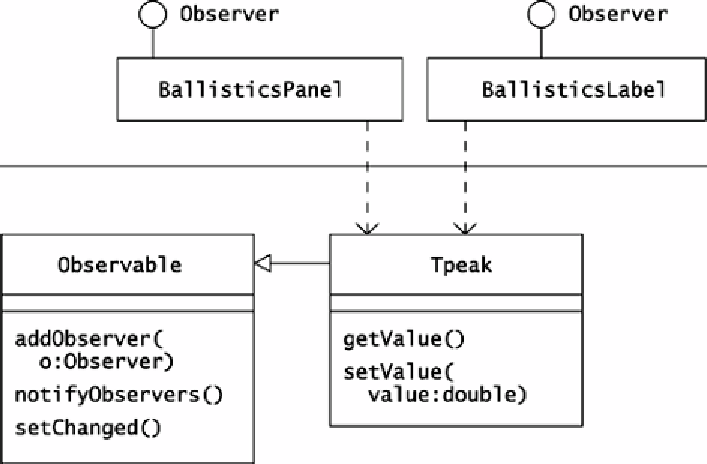Java Reference
In-Depth Information
Layering usually includes a clear definition of the interfaces between layers, such as a GUI
and the business, or domain, objects it represents. This opens the possibility of arranging for
different layers to execute on different computers. A layer that executes on a computer is a
tier
in an
n-tier
system. You can reorganize the responsibilities of the
ShowBallistics
code, achieving a layered system, as Figure 9.3 shows.
Figure 9.3. By creating an observable
Tpeak
class you can separate a business logic layer
from a GUI layer.
The design that Figure 9.3 illustrates creates a
Tpeak
class to model the t
peak
value,
the critical value in the ballistics equations that the application displays.
The
BallisticsPanel
and
BallisticsLabel
classes
depend
on
Tpeak
. Rather than
making a
Tpeak
object responsible for updating GUI elements, the design applies O
BSERVER
so that interested objects can register for notification when
Tpeak
changes. The Java class
libraries supports this, providing an
Observable
class and an
Observer
interface in
the
java.util
package. The
Tpeak
class can subclass
Observable
and can update its
observers when its value changes.
public void setValue(double value)
{
this.value = value;
setChanged();
notifyObservers();
}
Note that you have to call
setChanged()
so that the
Observable
code will broadcast
the change. (It is questionable whether a design that requires two steps to notify observers is
ideal.)

